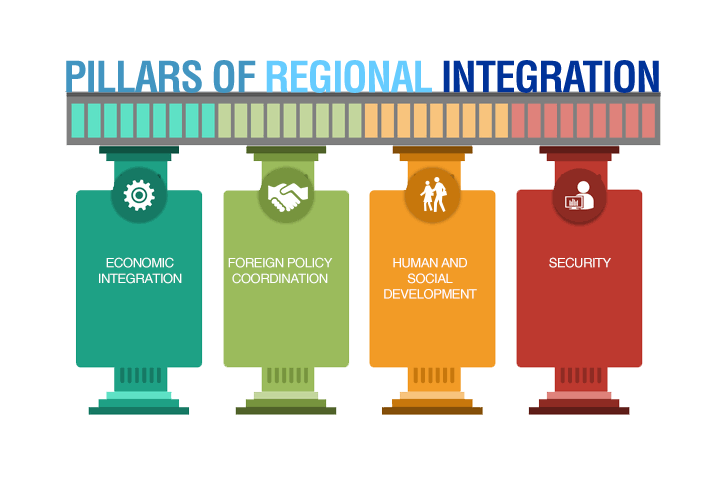Who we are
The Caribbean Community (CARICOM) is a grouping of twenty-one countries: fifteen Member States and six Associate Members. It is home to approximately sixteen million citizens, 60% of whom are under the age of 30, and from the main ethnic groups of Indigenous Peoples, Africans, Indians, Europeans, Chinese, Portuguese and Javanese. The Community is multi-lingual; with English as the major language complemented by French and Dutch and variations of these, as well as African and Asian expressions.
Stretching from The Bahamas in the north to Suriname and Guyana in South America, CARICOM comprises states that are considered developing countries, and except for Belize, in Central America and Guyana and Suriname in South America, all Members and Associate Members are island states.
While these states are all relatively small, both in terms of population and size, there is also great diversity with regards to geography and population as well as the levels of economic and social development.
Pillars of Integration
Functional cooperation, in various conceptions, has always been a quest for countries of the Caribbean. From the early efforts for a political union which led to the establishment of the West Indies Federation (1958), to the deeper and more structured engagements of the Caribbean Free Trade Association (CARIFTA) (1965), to the more sustained measure of regional integration through a Caribbean Community(1973). The last, for Member States, offered the best prospect for Caribbean economic development.
CARICOM came into being on 4 July 1973 with the signing of the Treaty of Chaguaramas by Prime Ministers Errol Barrow for Barbados, Forbes Burnham for Guyana, Michael Manley for Jamaica and Eric Williams for Trinidad and Tobago.The Treaty was later revised in 2002 to allow for the eventual establishment of a single market and a single economy.

CARICOM rests on four main pillars: economic integration; foreign policy coordination;human and social development; and security. These pillars underpin the stated objectives of our Community –
- to improve standards of living and work;
- the full employment of labor and other factors of production;
- accelerated, coordinated and sustained economic development and convergence;
- expansion of trade and economic relations with Third States;
- enhanced levels of international competitiveness;
- organization for increased production and productivity;
- achievement of a greater measure of economic leverage;
- effectiveness of Member States in dealing with Third States, groups of States and entities of any description;and
- the enhanced coordination of Member States’ foreign and foreign economic policies and enhanced functional cooperation.
Our journey
CARICOM is the oldest surviving integration movement in the developing world. Its achievements along the way are many. Great strides have been made, particularly through functional cooperation in education, in health, in culture, in security. Its Single Market functions,and it is a respected voice in international affairs because of a coordinated foreign policy.

